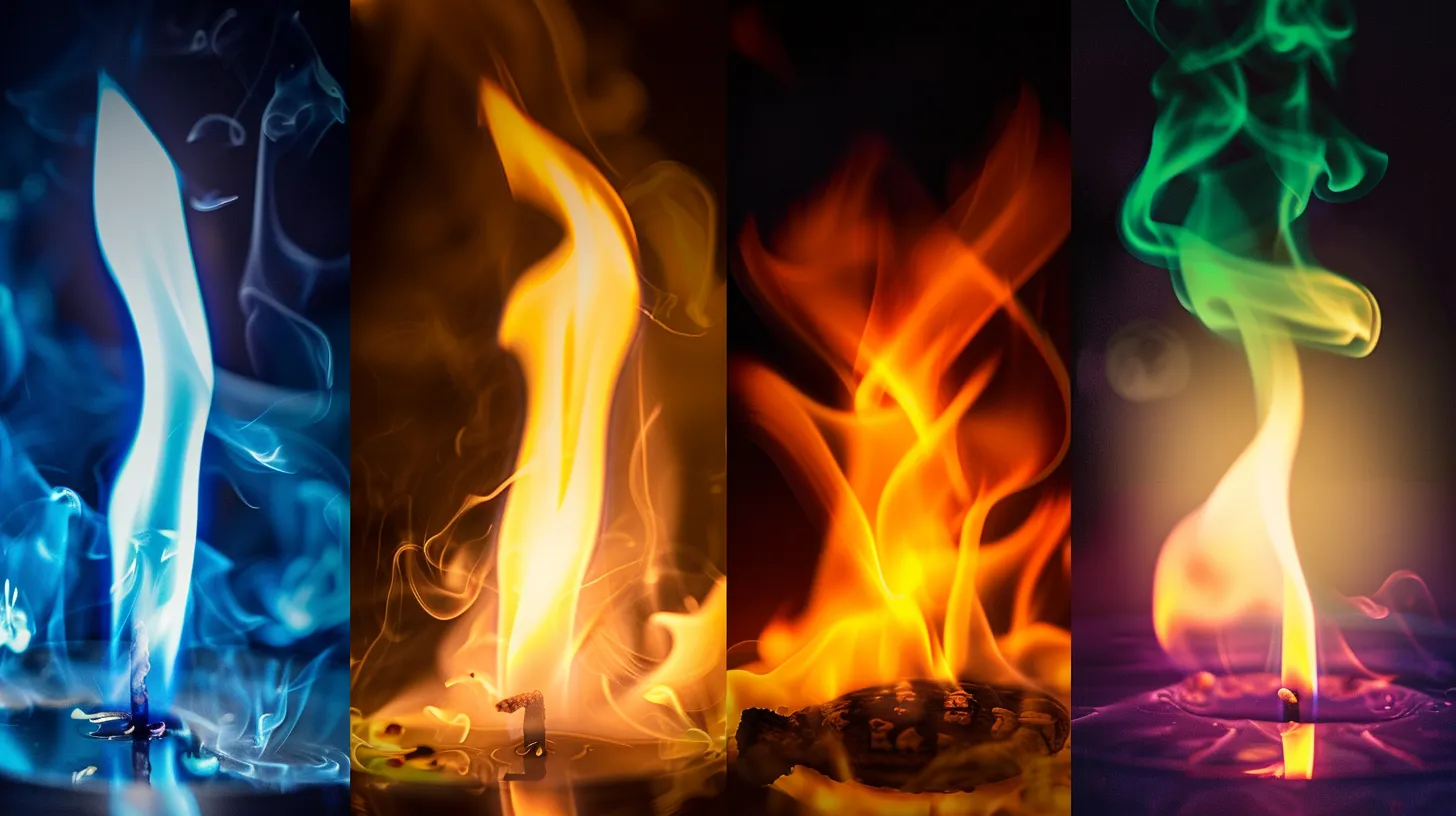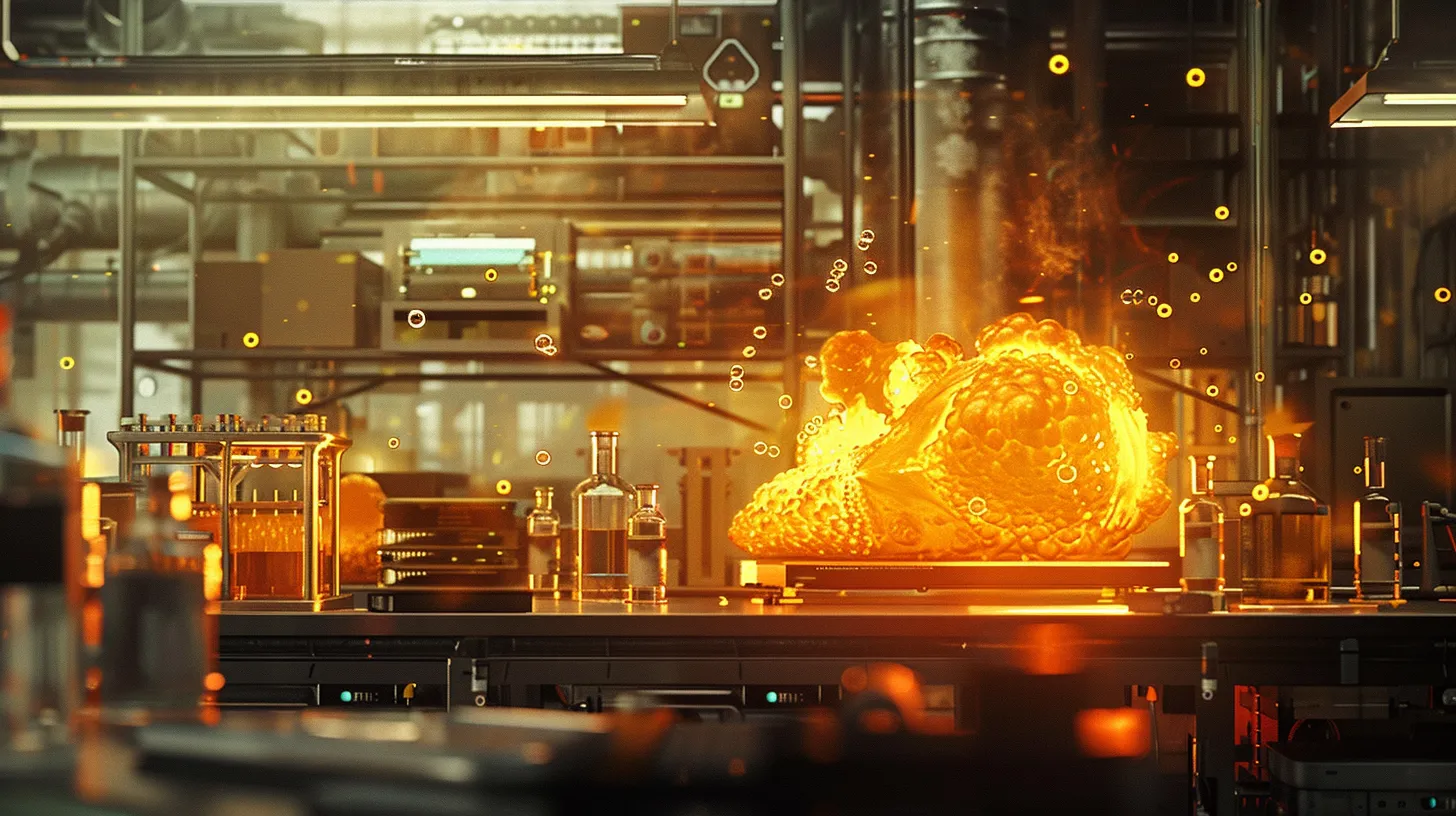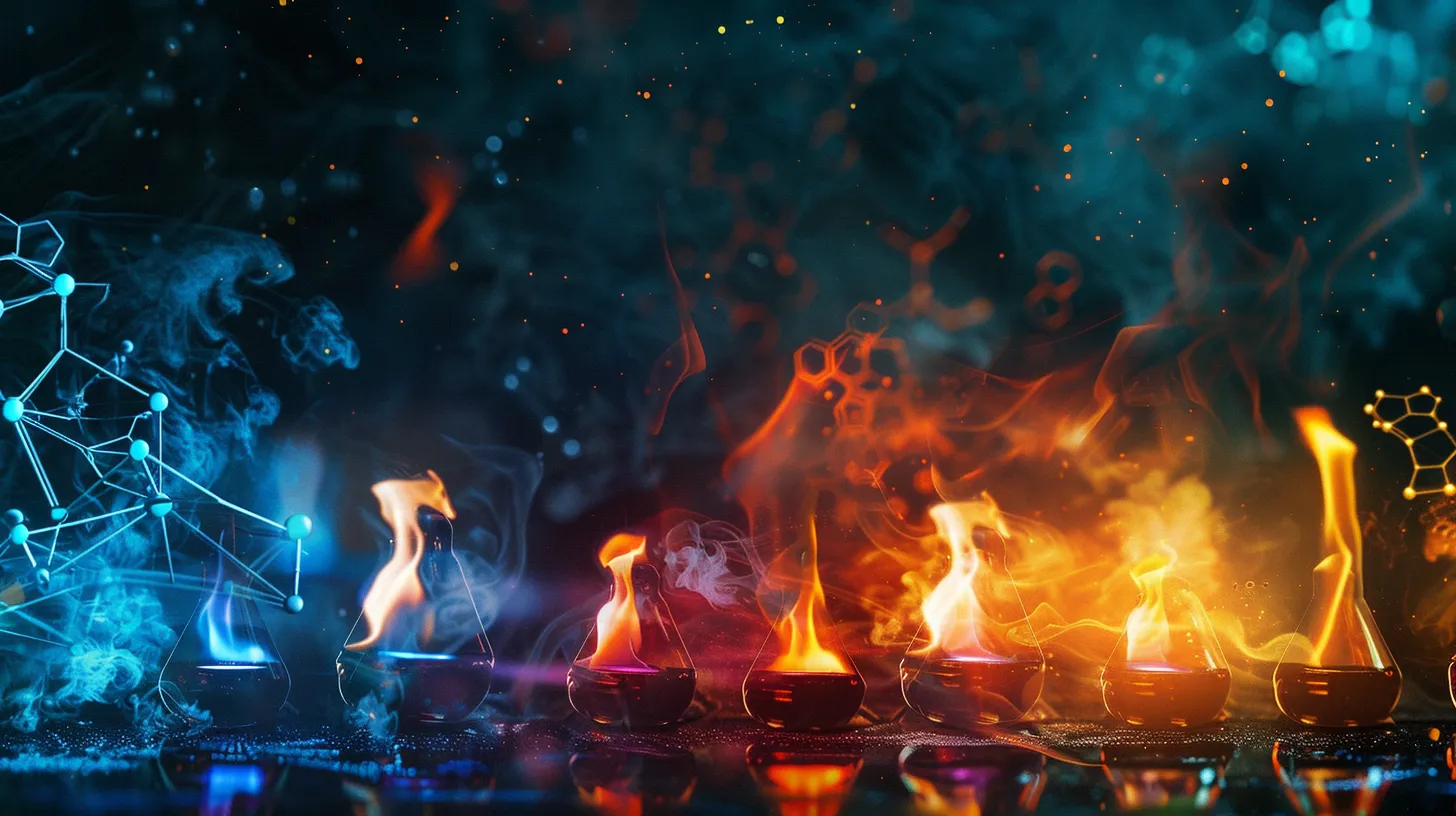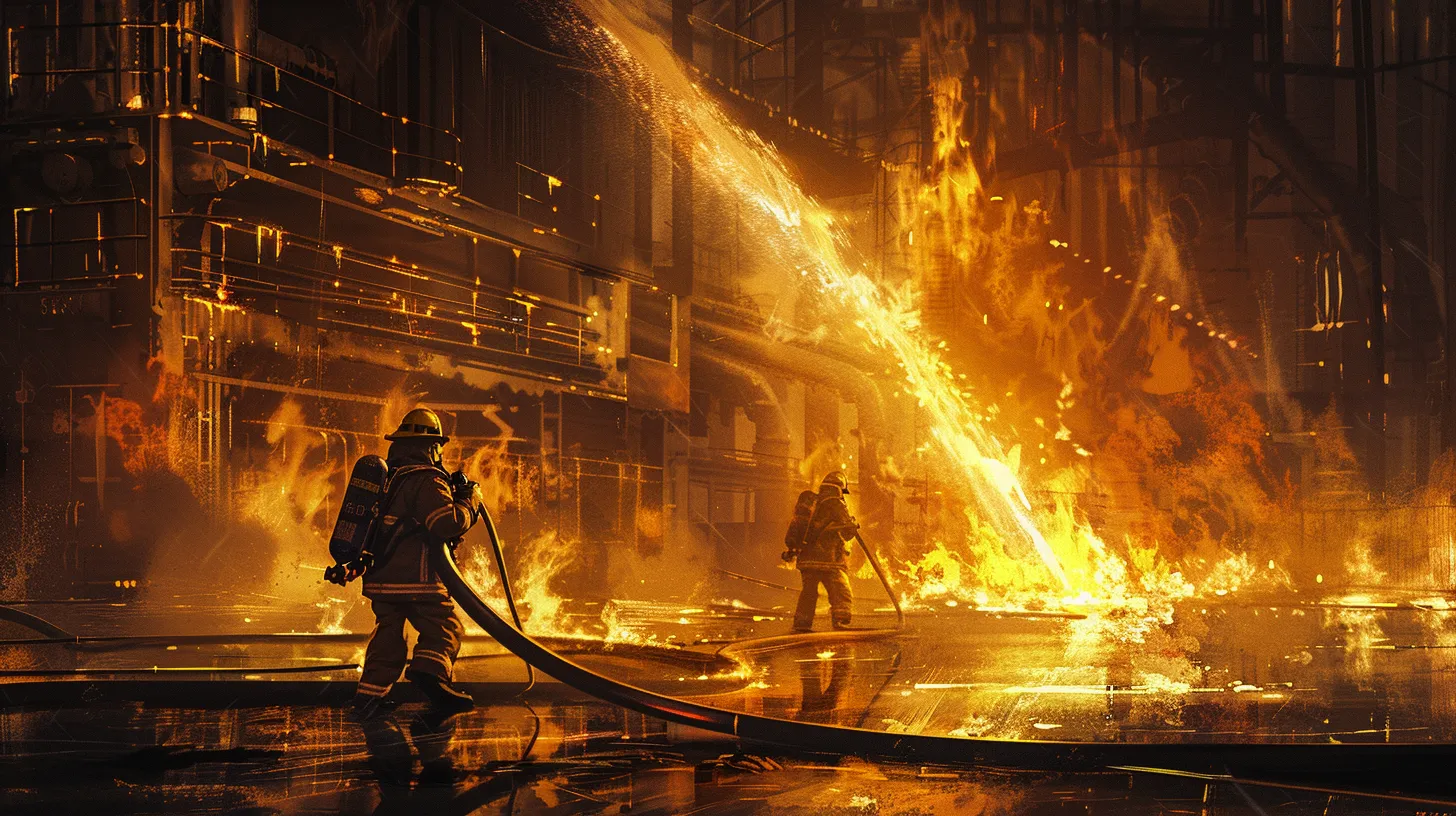Combustion chemistry involves the rapid interaction between a fuel source and oxygen, leading to the release of heat, light, and various byproducts. At its core, the process is governed by a simple chemical equation: Fuel + Oxygen → Carbon Dioxide + Water + Heat. This exothermic reaction is enhanced under ideal oxygen conditions , allowing for a cleaner and hotter burn, as signified by a blue flame . Factors such as fuel type, temperature, and environmental conditions profoundly influence the nature and speed of combustion. Understanding these elements can greatly enhance fire management and safety techniques. Our exploration here serves as an introduction to the more intricate aspects of combustion science.
Basics of Combustion Chemistry

Combustion chemistry is the study of how fuel interacts with oxygen to produce heat, light, carbon dioxide, and water, forming the basis of numerous essential processes in daily life and industrial applications. This interaction is fundamental to understanding how fires start, sustain, and can be controlled. The basic combustion equation, Fuel + Oxygen = Carbon Dioxide + Water + Heat, underscores the role of oxygen from the fire in driving this exothermic reaction .
Oxygen, a key reactant, combines with various fuels to release energy in the form of heat and light. Its availability plays a vital role in influencing the combustion process's efficiency and characteristics. For instance, a well-oxygenated fire burns brighter and hotter, indicating a more complete combustion where most of the fuel is converted to carbon dioxide and water. Conversely, limited oxygen supply leads to incomplete combustion , producing smoke and other potentially hazardous byproducts.
Understanding these dynamics is essential for effective fire prevention and control , especially in environments prone to wildfires or in industrial settings where controlled combustion is necessary. The knowledge gained from studying the interaction between fuel and oxygen from the fire aids in developing safer, more efficient combustion applications , from household heating to powering engines.
Different Types of Flames

Flames, the visible indicators of combustion, vary greatly in color and temperature, reflecting differences in combustion efficiency and available oxygen. The variation in flame characteristics is not only a spectacle but also a scientific indicator of the combustion process's nature. Blue flames , for instance, signify complete combustion and are typically hotter than yellow flames . This higher temperature is attributed to the efficient use of oxygen in the air, enhancing the combustion process.
The color of a flame is markedly influenced by the amount of oxygen accessible during combustion. When oxygen is plentiful, flames burn blue, indicating higher efficiency and complete combustion of the fuel. Conversely, yellow flames often result from a lower oxygen supply , leading to incomplete combustion and the release of soot particles , which glow to give the flame its yellow color.
Different fuels also contribute to the diversity in flame coloration and temperatures. For example, the varied and vibrant colors observed in fireworks result from different chemical compounds that emit specific colors when burned. Additionally, a candle flame showcases distinct zones of combustion, from the blue base indicating complete combustion to the yellow tip where incomplete combustion occurs. These variations provide critical insights into the conditions and efficiency of different combustion processes .
Oxygen's Crucial Role

Building on the understanding of flame characteristics , it is important to explore how oxygen profoundly influences the combustion process . Oxygen, as the essential oxidizer in combustion reactions, is fundamental for enabling fuel to burn and produce heat and light. This interaction is not merely incidental but central to how fires initiate and sustain themselves.
The role of oxygen extends beyond mere sustenance of flames; its presence or absence can control and even extinguish fires. For example, when a candle is blown out, the action displaces oxygen around the flame, effectively stopping the combustion process. This principle is similarly employed in fire extinguishers , which disrupt the oxygen supply to the fire, controlling or suppressing the blaze.
Moreover, environmental factors that increase the availability of oxygen, such as wind, can accelerate fires. This phenomenon is often observed in wildfires, where wind plays a critical role in spreading flames by providing more oxygen to produce an intensified reaction. Conversely, controlled burns are a method of fire management that carefully manages oxygen levels to prevent the spread of uncontrolled wildfires and maintain ecosystem health , demonstrating the pivotal role oxygen plays in both the exacerbation and control of fire.
Analyzing Combustion Speed

Understanding the factors that influence combustion speed is essential for effective fire management and prevention. Combustion speed, the rate at which combustion occurs, is greatly impacted by several variables including fuel temperature , oxygen concentration , and the physical characteristics of the fuel such as surface area .
Higher temperatures can accelerate combustion speed dramatically. This is due to the fact that increased heat boosts the reaction kinetics , which in turn speeds up the rate at which the fuel is consumed.
Moreover, the availability of oxygen is pivotal in determining combustion speed. A rich oxygen environment supports faster combustion as it enables more efficient fuel burning . Conversely, limited oxygen availability can slow down the process significantly. The surface area of the fuel also plays a critical role; smaller or finer fuels have higher surface areas relative to their volume, which facilitates quicker ignition and faster burning.
In the context of fire safety and management, understanding and controlling combustion speed is crucial. It allows for the development of more effective firefighting techniques and enhances overall fire safety measures. Knowing how quickly a fire can escalate from a small flame to a large blaze is important for implementing timely and effective fire suppression strategies .
Fire Suppression Methods

To effectively combat fires, various suppression methods are employed, each tailored to disrupt different elements of the fire triangle: heat, fuel, and oxygen. One common method involves using water to cool the fuel , greatly reducing the heat available to sustain the fire. This approach not only addresses the thermal component of fire but also helps in preventing the spread of flames.
Additionally, firefighters often use foam or chemicals designed to smother the flames. These substances work by forming a barrier over the fuel or directly on the flames, effectively isolating the fire from its oxygen supply. Among these chemicals, carbon dioxide is particularly remarkable. When deployed, carbon dioxide displaces the oxygen around the fire, suffocating it and thereby interrupting the combustion process .
Understanding the specific conditions and characteristics of a fire is essential in selecting the most effective suppression technique. Combining methods, such as using both water and carbon dioxide, can enhance the efficiency of fire control efforts. This strategic approach ensures that firefighters can effectively break the chain reaction of the elements that fuel fires, providing a thorough solution to fire suppression challenges.
Practical Applications of Combustion

How does combustion play a pivotal role in everyday applications and industrial processes ? Combustion occurs across various essential activities, fundamentally shaping modern society. In transportation , combustion engines convert fuel into mechanical energy, propelling vehicles and machinery. This transformation is important for mobility and logistics, impacting everything from daily commutes to global trade.
In culinary practices , controlled combustion is essential for cooking food. This application harnesses the heat generated when combustion occurs, allowing for efficient meal preparation. Similarly, residential and commercial heating systems rely on combustion to maintain comfortable indoor temperatures, especially in colder climates.
Moreover, combustion is indispensable in electricity generation . Power plants burn fuels to produce heat, subsequently converted into electrical power through generators. This process is central to meeting the energy demands of contemporary society.
Industrial processes also depend heavily on combustion. For instance, metal smelting involves combustion to reach the high temperatures necessary for extracting and refining metals. This application underscores combustion's critical role in enabling industrial advancements and construction.
Each instance where combustion occurs, whether for powering engines, cooking, heating, generating electricity, or conducting industrial processes, reflects its integral role in sustaining and advancing human activities .










